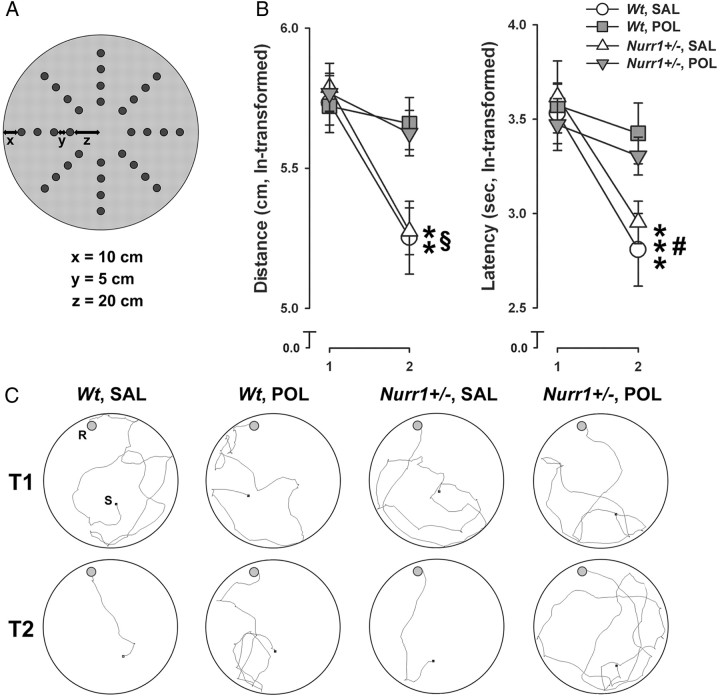Figure 5.
Independent effect of prenatal immune activation on spatial working memory deficits. Pregnant wt and Nurr1+/− mice were treated with the viral mimetic poly(I:C) (POL) (2 mg/kg, i.v.) or vehicle [saline (SAL)] on gestation day 17, and the resulting offspring were tested in early adulthood. A, Spatial working memory was assessed using a dry maze containing 32 holes arranged in a radial design as schematically illustrated. The working memory task was based on the matching-to-position paradigm, in which the animals were required to learn the novel position of a rewarded hole revealed to them on trial 1 of each day to navigate effectively to the same location (i.e., matching) on the subsequent trial on the same day. B, The line plots show the distance moved and latency to find the rewarded hole in trial 2 relative to trial 1. **p < 0.01 (distance) and ***p < 0.001 (latency), reflecting the significant main effects of trials in offspring subjected to prenatal SAL treatment; §p < 0.01 and #p < 0.05, reflecting the significant difference between prenatally SAL- and POL-treated offspring in trial 2 with respect to distance moved and latency, respectively. N = 7 in each experimental group; all values are means ± SEM. C, Computer-generated search path of representative SAL- or POL-exposed wt and Nurr1+/− offspring in trial 1 (T1) and trial 2 (T2) of the working memory test. S, Starting position; R, location of the rewarded hole. Note that there was a delay of ∼1 s between placing the animal in the center of the maze and starting the video tracking system, so that the seemingly discrepant starting positions are attributable to this 1 s delay, during which some animals already moved away from the center.

